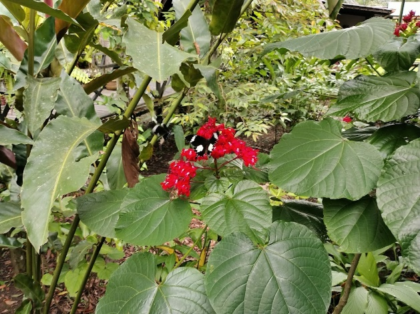Professor Thomas Jones, College of Sustainability & Tourism, Asia-Pacific University, Beppu, Japan
From 5-7 November 2024, Wildlife Tourism Australia hosted a conference entitled “Wild Tails: the Value of Story-telling and other Quality Interpretation in Wildlife Tourism.” After presenting my paper, I was lucky enough to win a prize in the raffle and a few months later, in April 2025, found myself headed to Malaysian Borneo for a couple of nights in the rainforest.
At the western end of Southeast Asia’s ‘coral triangle’, Borneo is a destination that stirs the soul—an untamed jungle realm dripping with mystery and magical biodiversity, from the peak of Mt. Kinabalu to the giant rafflesia. As the third-largest island in the world, Borneo is a vast canvas of towering rainforest canopies, thunderous rivers, and a cast of wildlife so rare that it feels like you’ve stepped into a living Nat-Geo documentary.
Traveling with our young family in tow, we arrived with big dreams—and even bigger binoculars. Our mission? To track down Borneo’s legendary “Big 5”: Orangutans, Pygmy Elephants, Proboscis Monkeys, Rhinoceros Hornbills, and Crocodiles.
The next morning we were up early for the dawn tour which soon paid dividends when a raucous troupe of Proboscis Monkeys leapt across a creek right in front of our boat, the males’ pendulous noses clearly visible. Our guide chuckled and told us that in Japanese folklore, they’re called Tengu-zaru, after a mythical mountain creature known for its long beak. That evening, as the sun dipped low and the river began to glow gold, we spotted him: a lone Orangutan, silhouetted high in the canopy like a forest king surveying his domain. The kids were elated to spot number four on the list…only the elusive crocodile remained.
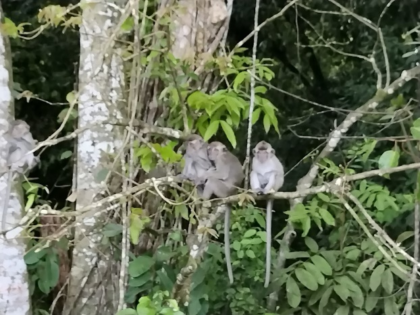
Borneo had already won us over, but our basecamp made the experience truly unforgettable. Tucked on the riverbank like a secret hideout, Sukau Rainforest Lodge is a shining example of eco-tourism done right…although I’ll admit—I was a bit sceptical when I first heard the term ‘eco-lodge.’ But Sukau is the real deal. Built on the traditional raised platforms using stilts from reclaimed hardwood, the lodge harvests its own rainwater, harnesses solar power, and cuts down on single-use plastic with reusable glass bottles. Plantain Squirrels scamper along the wooden walkway while a 5m long crocodile skeleton is a reminder for guests to be on their best behaviour! Every detail of the lodge has been thought through, from solar-heated showers to off-grid power, the staff are also actively re-planting the rain forest and organize volunteer programs to remove invasive species such as the water hyacinth. But the real magic? The dawn and dusk river cruises. There’s nothing like gliding silently over the glassy water, the river banks coming alive with hoots, howls, and the occasional splash. We spotted mischievous macaques swinging effortlessly between trees and caught more glimpses of Tenguzaru as the golden light filtered through the leaves.
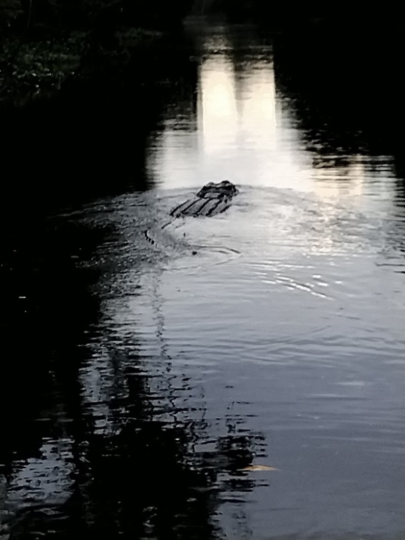
Our journey began by bus from Sandakhan followed by a boat ride up the mighty Kinabatangan River – Sabah’s longest, snaking through ancient jungles with green corridors along the banks that stand defiantly against the encroaching palm oil plantation. As we raced upstream towards the lodge, the captain suddenly killed the engine … our guide had spotted a family of Pygmy Elephants who had come to cool off from the midday sun! They passed like ghostly grey shadows, quietly grazing at the river’s edge. Later that evening, hornbills soared overhead, their huge beaks and loud wingbeats making them impossible to miss.
Finally, on a side-stream branching off the main river our guide spotted ‘Old Black’…an enormous estuarine crocodile who was gliding nonchalantly downstream towards the Kinabatangan. After a few minutes of silently tailing the 4m+ croc, our youngest daughter Amy who was on lookout duty at the front of the boat suddenly sat up sharply and asked me: “Daddy, where’s the croc gone?!” Black-back had dived, and at the same instant, the boat driver revved the engine and we sped off out of the danger zone and out of the creek.
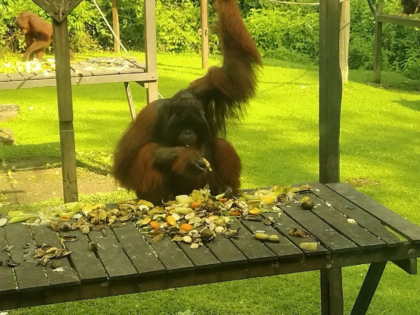
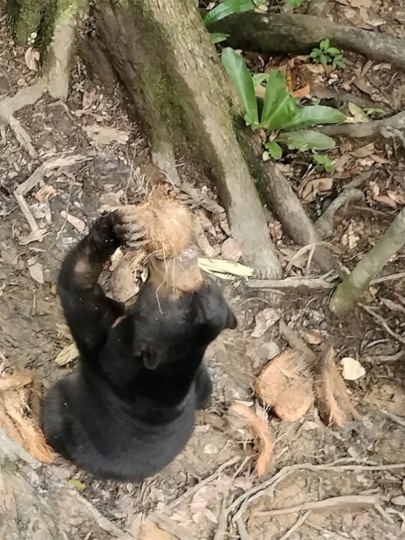
The Big5 had been a hit and a spectacular ‘near miss,’ and on the way back to the airport we also stopped by Sepilok reserve and orangutan rehabilitation centre.
The government forest reserve is also adjacent to Bornean Sun Bear Conservation Centre. Spread over five hectares, the BSBCC is a semi-wild area on the fringes of Sepilok’s rainforest created in 2008 as an oasis to rehabilitate rescued sun bears. The centre opened to the public in 2014 and the founder, Dr Wong, continues to work tirelessly to save the world’s smallest bear, with rescued cubs allowed to roam free within the premises, while visitors watch them from raised viewing platforms.
Without a doubt, Borneo was the most thrilling destination we’ve yet explored for wildlife. It’s raw, real, and absolutely unforgettable. Thanks again to Albert, Fernando and all the team. Terima kasih and hope to visit again soon!
